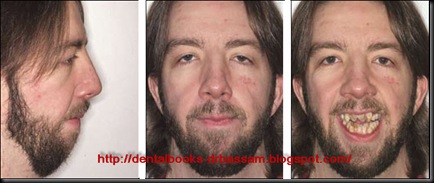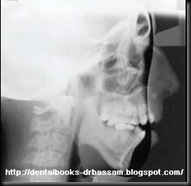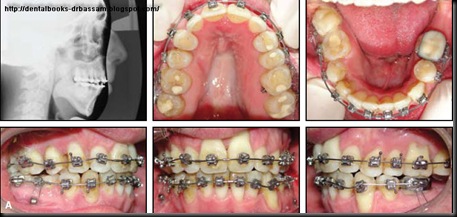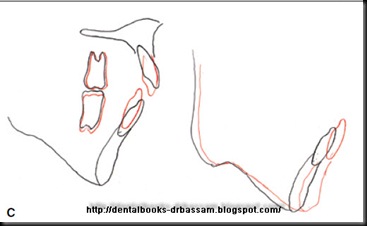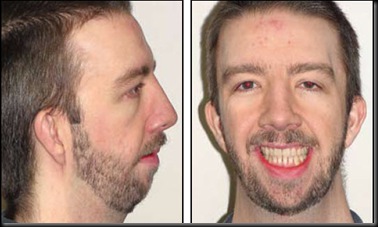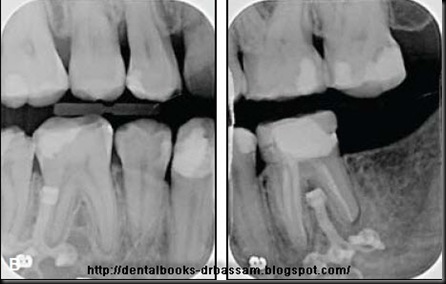This blog is for all the dental students which will help in providing them with the list of relevant books on dentistry along with the free download links to access the material and find notes and past papers. They can also engage and benefit from the valuable discussion and help each other by sharing the knowledge during and after their educational career.
Saturday, June 11, 2011
Cleft Surgery: Repair of the Lip, Palate, and Alveolus
Peterson's Principals of Oral and Maxillofacial Surgery
The Root Canal Morphology
Antibiotics and Antiseptics in Periodontal Therapy
A Clinical Guide to Orthodontics

Part 1: Who needs orthodontics?
Part 2: Patient assessment andexamination I
Part 3: Patient assessment and examination II
Part 4: Treatment planning
Part 5: Appliance choices
Part 6: Risks in orthodontic treatment
Part 7: Fact and fantasy in orthodontics
Part 8: Extractions in orthodontics
Part 9: Anchorage control and
Part 10: Impacted teeth
Part 11: Orthodontic tooth movement
Part 12: Combined orthodontic
Onyx-Ceph Program :for cephalometric &cast analysis
Orthodontic Pearls A Selection of Practical Tips and Clinical Expertise
The Tip-Edge Orthodontic System
Invisible Orthodontics: Current Concepts and Solutions in Lingual Orthodontics
Establishment of the Provisional Fixed Appliances
Temporary Prosthesis Attachment for Fixed Apliances
earlier. In these cases, it is necessary adaptation of the provisional order to give aesthetics during treatment.
In the initial stages of treatment, can set the apparatus in a provisional a removable tongue, not staples, for allow alignment and leveling without interference. When we arrived to the rectangular wire, can keep in the provisional position by means of brackets and the actual
wire, which gives comfort to the patient as refine the mechanics.

Cephalometrics Student Guide
Orthodontics: Picture Test Atlas
- Paperback: 184 pages
- Publisher: Butterworth-Heinemann; 3 edition (January 15, 1997)
- Language: English
- ISBN-10: 072361072X
- ISBN-13: 978-0723610724
Dentos Handbook for Orthodontic IMPLANTS
Clinical Facial Analysis
The Neurobiology of Orthodontics
Enhancement Orthodontics -Theory and Practice
Contemporary Orthodontics 4th Edition
Number Of Pages: 768
Publication Date: 2006-12-08
ISBN-10 / ASIN: 0323040462
ISBN-13 / EAN: 9780323040464
THE 20 PRINCIPLES OF THE ALEXANDER DISCIPLINE
Facial and dental planning for orthodontists and oral surgeons
Richard McLaughlin, BS, DDS, San Diego, CA
ISBN-10: 0-323-05315-7
Textbook of Orthodontics Second Edition: 2007
The human face
Textbook of Orthodontics By T. D. Foster 1991
Orthodontics for Dental Students
Tooth Movement with Removable Appliances
essential of orthognathic surgery
Removable Orthodontic Appliances
Three Dimensional imaging in orthodontics
Self-Ligation in Orthodontics
Mini-Implants in Orthodontics: Innovative Anchorage Concepts
Three-Dimensional Cephalometry
Understanding Orthodontics
Orthodontic Cephalometry
Clincal Problem Solving in Orthodontics and Paediatric Dentistry
Ligual Orthodontics
Current Therapy in Orthodontics - Nanda
Biomechanics and Esthetic Strategies in Clinical Orthodontic
ISBN-13: 978-0721601960
CASE REPORT
LEGAL NOTICE
Throughout this text, I note that anyone accessing this site is aware that books, papers, files, power points, documents or programs owned and are trademarks of their respective owners. This virtual site has been designed with educational goals, and scientific opinion. The purpose of this is to deliver tools and support to students who unfortunately do not have money to buy these books and are used in their respective subjects. The author of this website assumes no responsibility for the misuse of this information. None of the books on this blog have been scanned by the same author, these were uploaded to the network by others. All material in this site has been downloaded from and through various websites, forums, programs, partnerships, etc.. And collected throughout the years. We recommend buying the original book.








![[1.jpg]](https://blogger.googleusercontent.com/img/b/R29vZ2xl/AVvXsEh_Hj5ckEZoyAh45p7WYIq_iJG9d4GuJRmuBniOofe1HG6o2mo2j0WDrJRWbVnD1AhHtgq_rytcf4I8dWHBxVTSG3RQZT5l96Jakvx1LNayI51lGbFR2wJ1EVBpzVfVPUFa6tQIfBXdA1w/s1600/1.jpg)



















![[smile4Dr.jpg]](https://blogger.googleusercontent.com/img/b/R29vZ2xl/AVvXsEhl-4ed3trBwhryqnSD74Ts53CRvPVm89CcK1QodueTgmdeuM9VZd8hcSZf2dvA787aQKAkcCleZ3IP440rV5aDjYiFRgSo0kharhQiESGXlB8RBP0wV06cZDyNed6bohZw7B0PAUPdpDA/s200/smile4Dr.jpg)
![[smile4Dr.jpg]](https://blogger.googleusercontent.com/img/b/R29vZ2xl/AVvXsEgTkSs0hvGOQWELuEGFiGJ03u22l4XGNqz1Ky5Avqb2Ffz9bhQXphakvBWA_eCKszXE-_6ImGgRsCJN8DDQUvnBTR3ag7OMTwSQmF0feRykYEBCOiaBz6PPFmxYWmC_0KKEPxF-n_IMo7Y/s200/smile4Dr.jpg)
![[smile4Dr.jpg]](https://blogger.googleusercontent.com/img/b/R29vZ2xl/AVvXsEiDGEqFrwnzo5ws343Vn7jS98ghhXDqvWREBrkleADV9N6QLDyTK6jvoEbQNK5snyXbCmz9YpGFRUXHvZC420x_dBOhmo_U0k03cVJya2yCw5ru_wSE5yMiO1eULiHCuwERBIJLpQUDrDo/s200/smile4Dr.jpg)

![[smile4Dr.jpg]](https://blogger.googleusercontent.com/img/b/R29vZ2xl/AVvXsEj-PnxdS3ZcAJ9NJUHDsyh1gItentVMD7-Z2W3N0MZ-S5Ynh-6Axdix3h1D7jjZbZHSGXO4_s95zseLZHPDVU8fSw8TXXKV7LGVJKi6YgoRxU_KEzPSPOyh7D4QqEqov8KSZCU48MrsHSk/s200/smile4Dr.jpg)









